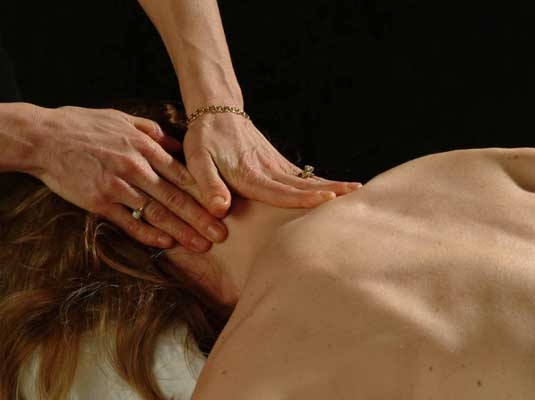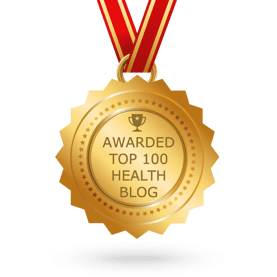Krista Merwede LMT
Patterns in the musculature of the body are defined by the movements that we do every day. If we are spending 40 hours a weeks at a desk it is understandable that not just that the body will be affected, but that it will develop specific lines of tension. The most common places for the desk worker to experience pain are in the back of the neck and around the shoulder blades. Many patients come into the treatment room greatly concerned that there is something wrong with them because of the intensity of the symptoms. This article will draw your attention to why the pain develops in these places and techniques that can be adapted to support the body's healthy structure. The body is very much so a 360 degree awareness. This integrity is compromised if we spend the majority of our day performing frontal motions: driving, typing, cooking, reading, holding a baby. Even though it is our neck and our back that begin to ache the shortening of the muscle fibers actually begins in the front of the body. This is why we massage the pectoral muscles and collarbone attachments as well as the neck and back, with the intention of releasing the body' s tension in a full circle awareness. This insures that the relaxation is total and the tight muscles in the front will not swiftly pull the muscles in the back out of place again. After receiving this type of focused massage it is an ideal time to receive chiropractic or acupuncture, as the body is relaxed and ready to receive deeper work.
The body is very much so a 360 degree awareness. This integrity is compromised if we spend the majority of our day performing frontal motions: driving, typing, cooking, reading, holding a baby. Even though it is our neck and our back that begin to ache the shortening of the muscle fibers actually begins in the front of the body. This is why we massage the pectoral muscles and collarbone attachments as well as the neck and back, with the intention of releasing the body' s tension in a full circle awareness. This insures that the relaxation is total and the tight muscles in the front will not swiftly pull the muscles in the back out of place again. After receiving this type of focused massage it is an ideal time to receive chiropractic or acupuncture, as the body is relaxed and ready to receive deeper work.
Sit Tall and Think "Spock Ears"
One of the first things to go as you plug away at the keyboard is the integrity of the cervical curve. We hunch forward and the back of the neck becomes mildly compressed. One of my all-time favorite cues, or kinetic reminders, is "Spock Ears". When I am behind the wheel or deep into a screen I will remind myself of these two words and bring my attention to my own ears. Imagine what it would feel like if your ears were to grow pointy, like Dr. Spock or an elf. As you picture the ears lengthening feel the gentle release of the cervicals as they become slightly more open, especially at the base of the skull where it meets the top of the neck. This opening translates down into the shoulder blades, releasing them down and open. The movement is subtle, the effect resounding. Practice doing your Spock Ears and feel your awareness grow as your neck releases. Learning about what cues we can use when we are not on the massage table will help keep us optimally in our bodies.
Helpful Work Habits
An important thing to remember is that you will have to work on your body while you are working at your desk. Getting up and stretching periodically is highly recommended. Knowing which stretches are the most effective for your body and its patterns is crucial after receiving your massage there will be the opportunity to customize some stretches that will be optimal for your individual form. Another aspect is that of hydration, the more water we have in our system, the more juicy and pliable our muscles are, and are therefore less likely to catch or pull.
Use Both Sides
A final thought that is less commonly considered is that of bi-lateral versus uni-lateral movement. What this means is: are you doing things with both sides of your body or only one? Most of us have heard about the importance of switching our child or or bag from shoulder to shoulder while carrying them to encourage structural balance. Continue this train of thought to your desk. Has your wastepaper basket been in the same corner on the left for the past five years? Does your right foot have the tendency to creep up and hook on the bottom rung of your chair? Do you tend to hold head to one side while you are deep in thought? Heightening your awareness to these micro-patterns in the body can provide valuable clues for both you and your practitioner when trying to determine your source of challenge. Try your best to listen to the more subtle holdings in your body; as you become more aware you can gradually make adjustments that will help support you as you are healthy and pain-free at your desk. Receiving a monthly therapeutic massage will do wonders for diminishing these common areas of pain and allow you to focus on your work, not your back.
Krista Merwede, L.M.T. practices therapeutic massage at National Integrated Health Associates, an integrative medicine and dental center serving the Washington DC metropolitan area. Krista Merwede specializes in Therapeutic Massage, Reiki, Reflexology, and Neuromuscular Therapy, techniques designed to address the source of pain and relieve stress.
.png?width=305&height=132&name=NIHAlogoBLUE_3_transparent%20(2).png)
